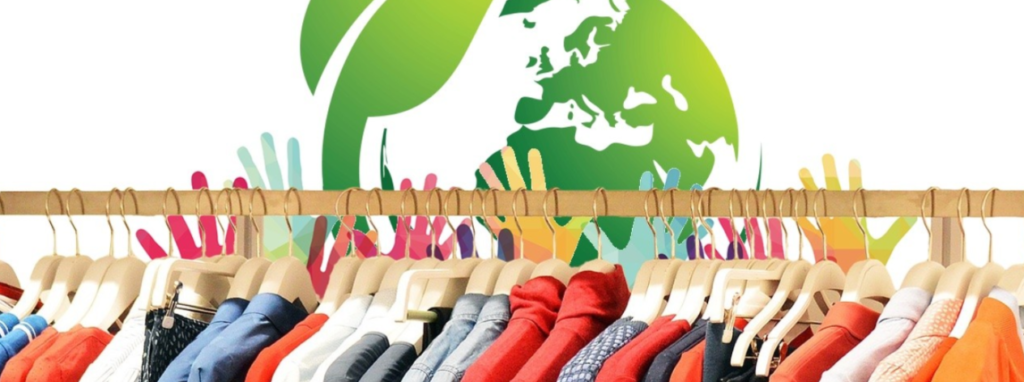
From 1 January 2022, non-food waste should start to be reduced.
Indeed, following the enactment of the Anti-Waste and Circular Economy Law (AGEC to its friends), the entire value and supply chain will have to reduce waste. Specifically, the law aims to “oblige producers, importers and distributors to re-use, re-purpose or recycle unsold non-food products”.
Every year, between 10,000 and 20,000 tonnes of new textile products are destroyed in France. This is equivalent to the weight of one to two Eiffel Towers. Worldwide, the textile industry emits 1.2 billion tonnes of greenhouse gases each year, or 2% of global greenhouse gas emissions.
The nature of this law is in line with the times: the need to consume less and better, to reuse in order not to generate an additional carbon footprint, etc. But it is important to understand to whom this law will apply and what penalties will be incurred.
Which sectors are affected by this law?
– Electrical products
– Electronic products
– Batteries
– Textiles
– Furniture
– Ink cartridges
– Hygiene and childcare products
– Food storage and cooking equipment
– Early learning products
– Leisure products
– Books
– School supplies
There are many producers of these different consumer goods whose supply chains are often long, dispersed and CO2-generating.
Although electrical and electronic products and everything related to technology are polluting and pose waste treatment problems, the fact remains that the industry that consumes the most natural resources and pollutes the most is the textile industry.
The textile and clothing sector is even the second most polluting industry and generates more than 1,200 billion tonnes of CO2 per year. To grow natural materials, to dye them, or to produce synthetic products, astronomical quantities of water are needed.

If we consider that a human being must drink between 1.5 and 2 litres of water per day, wearing jeans and a T-shirt represents consumption of 5100 days to 6800 days, we end up with human consumption of about 15 years on average!
The clothing industry needs new performance indicators, such as those set up by Fairlymade for example.
Vestiaire Collective and Vinted are tackling the issue of the lifespan or number of uses of a garment before it ends up in the back of a wardrobe before being thrown away.
However, a whole range of clothing is not taken into account: The clothes that are produced, put on the shelf, marketed, but never sold. In addition to the direct and indirect costs, it is the environmental impact that must also be taken into account with the thousands of litres of water and the associated CO2 to develop trousers, skirts, blouses, etc. that will not find a buyer.
Apart from going through 3D developments that can let consumers assess whether such and such a pattern, such and such a colour, will have any hope of commercial success, it is time to tackle a major problem head-on!
And this problem is that of morphology, of “fit”.
For a long time, a few mathematical rules were enough to extrapolate and what was not sold at the normal price tended to be sold at the discounted price, and in the worst case, the items were put on clearance. With AGEC, this is now a thing of the past and brands will have much to gain by using new technologies to assist them in the sizing and grading of their garments. This is EUVEKA’s core mission.
How does Euveka technology prevent the creation of future unsold items?
This preventive solution implemented upstream of the production process, allows better targeting of the market thanks to its data collection system.
The mannequin robot makes it possible to reproduce a fitting experience as close as possible to morphological reality.
Being able to collect information before the fitting on a mannequin and on various other morphologies is an undeniable asset to verify the fit of the garment before launching thousands of units that do not correspond to the morphologies of the target market and that will either be returned or unsold.
Euveka’s technology prevents production defects and allows brands to better fit and sell to all body types.
In case of infringement, what do companies risk?

15,000 EURO per breach and per legal person.
Are the initiatives of some brands on recycling their products linked to this law?
While awareness of environmental stewardship and the need to consume natural resources more efficiently is healthy, the fact remains that most mid-and high-end brands that have embarked on recycling their products have done so from 10 February 2020, when the AGEC law was enacted.
Unsold clothing accounts for 40% of unsold goods and has the greatest impact in terms of pollution and waste of natural resources.
Some brands, such as Wuxly Movement, a Canadian brand, even offered to take back used down jackets, or those still in condition, in order to establish a credit note for the purchase of their product, which is “cruelty-free”, without feathers or fur, in order to participate in a fashion that is less aggressive towards animal species. This brand also stands out for its commitment to recycling raw materials in order to have the lowest possible carbon footprint.
In Europe, and in France in particular, the objects and clothes that can no longer be disposed of must be donated to charities.
While we can be pleased with this implementation of solidarity at full speed, taking into account morphotypes from the design phase of products is an option that will also make it possible, along with reuse and recycling, to reduce the waste of natural resources.
To find out more about the AGEC, please visit the Ministry of Ecology website.